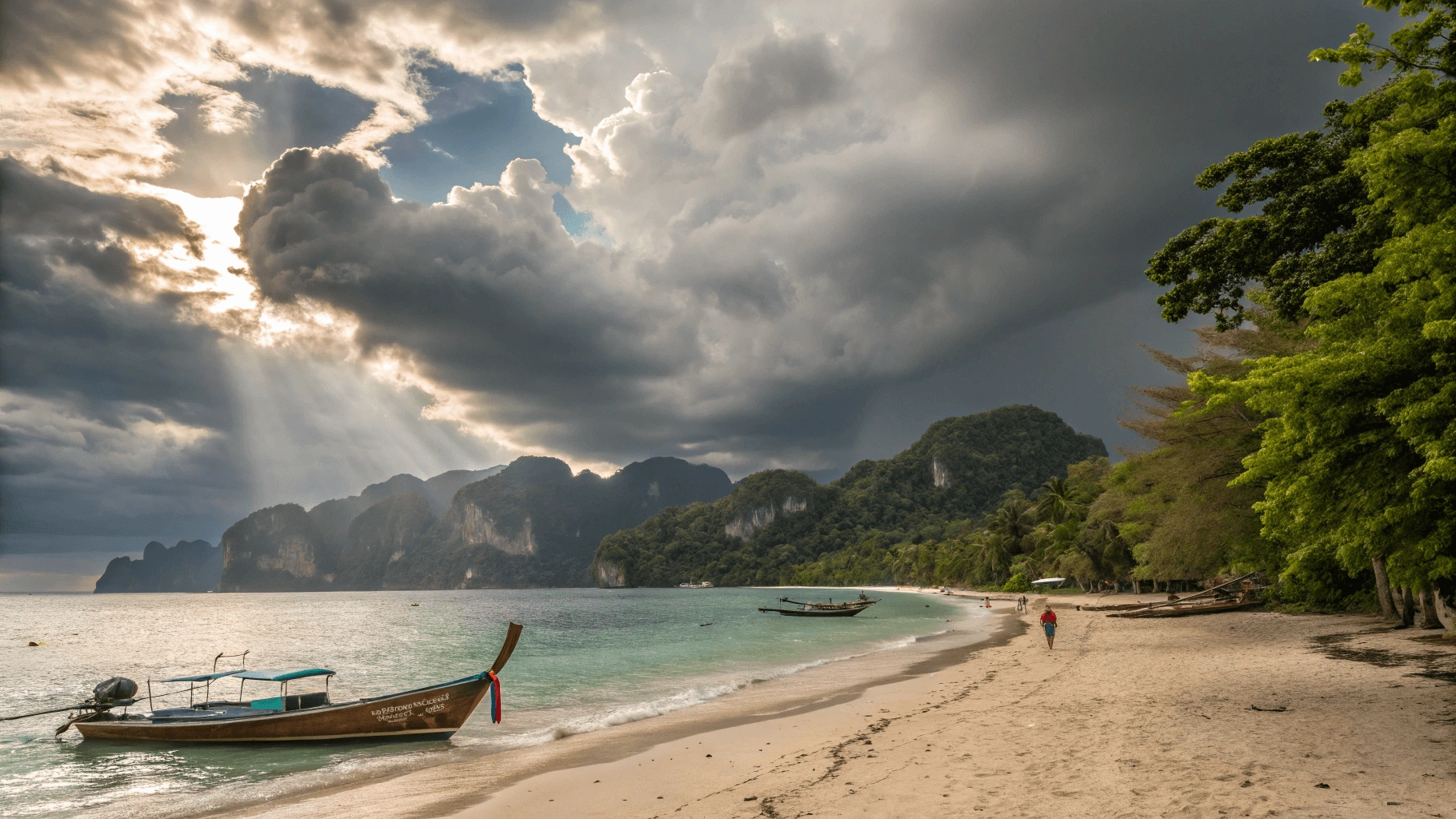In a country as diverse as Thailand, determining the “worst” time to visit requires understanding the complex seasonal patterns that affect different regions in vastly different ways. Whether you’re planning to explore Bangkok’s urban landscape, relax on southern beaches, or trek through northern mountains, timing can make or break your experience.
But here’s the truth: the worst time to visit Thailand varies dramatically depending on where you’re going and what you want to do.
For many travelers, the peak rainy season (June-October) and the northern burning season (February-April) are considered the worst periods, but these generalizations oversimplify Thailand’s complex regional weather patterns. Thailand’s climate is influenced by three distinct seasons and multiple climate zones, as detailed by Climate-Data.org.
This comprehensive guide breaks down Thailand’s challenging seasons by region, helping you make an informed decision about when to plan your trip—or how to make the most of your visit if you must travel during these periods.
Table of Contents
The Main Culprits: Understanding Thailand’s Challenging Seasons
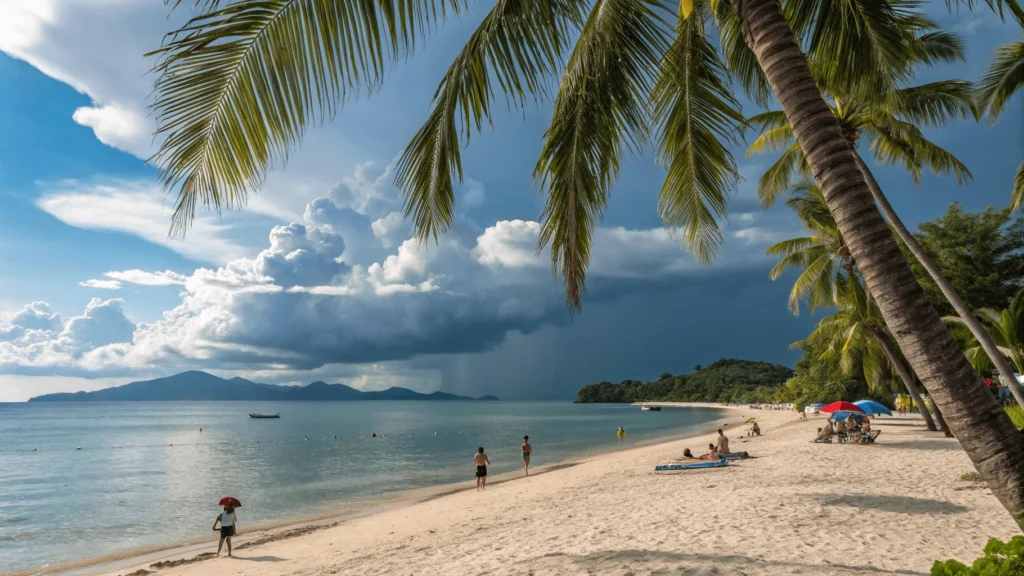
The Rainy Season (Monsoon): Not Uniformly “Bad”
General Overview
Thailand’s rainy season typically runs from May/June to October/November, but—and this is crucial—it doesn’t affect all regions simultaneously or with equal intensity. The monsoon brings regular rainfall, increased humidity, and occasionally, travel disruptions.
But contrary to what many assume, rain during the monsoon season often falls in predictable patterns: intense downpours that last for a couple of hours, frequently in the late afternoon or evening, followed by clear skies. It rarely rains all day, every day.
Regional Breakdown
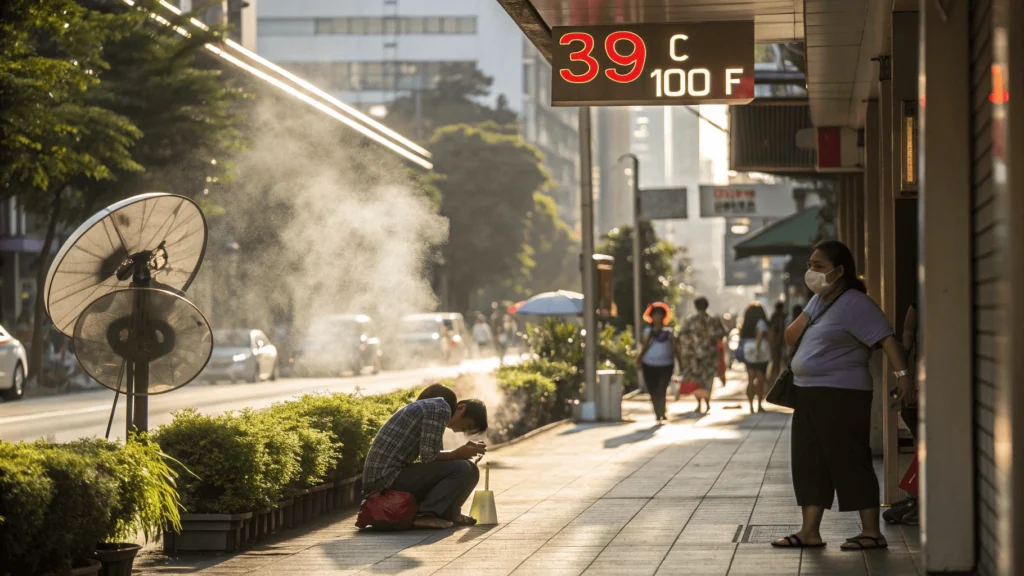
Understanding regional differences in Thailand’s rainy season is perhaps the most important factor in deciding when to visit:
Andaman Coast (Phuket, Krabi, Phi Phi)
- Heaviest rain: May to October
- Impact: Rough seas make some boat excursions impossible, with many island tours suspended during this period
- Beach conditions: Waves can be dangerous for swimming
- Positive aspects: Lush green landscapes, dramatically reduced tourist numbers, and significantly lower accommodation prices
- Travel consideration: Some smaller businesses close during the wettest months (especially September)
“In Phuket during August, I experienced morning sunshine followed by afternoon downpours—perfect for morning beach time and afternoon spa treatments. Hotels were 40% cheaper than during high season.” — Experienced Thailand traveler
Gulf Coast (Koh Samui, Koh Phangan, Koh Tao)
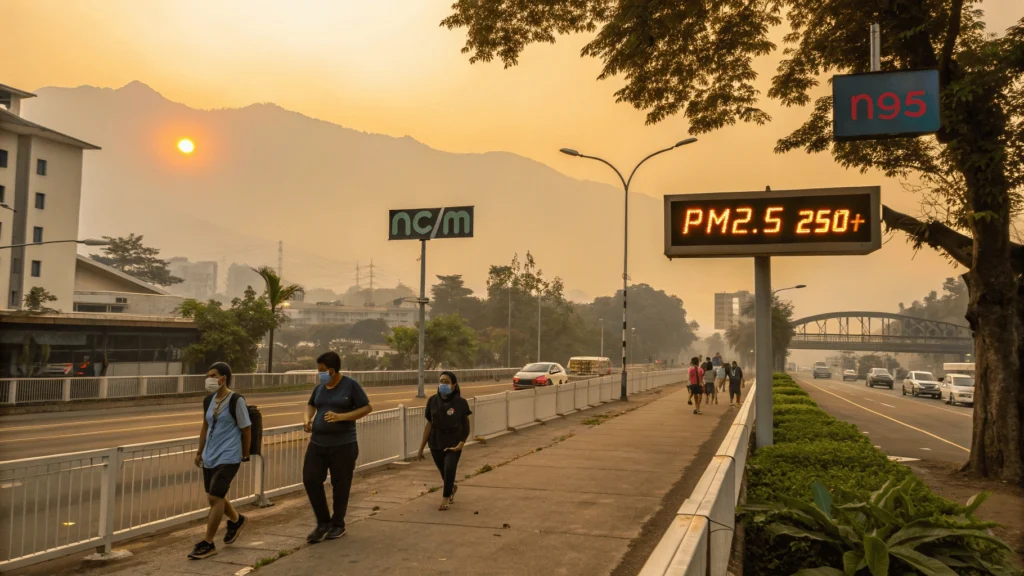
- Weather pattern: Completely different from the Andaman coast!
- Drier period: May through September
- Heavier rain: October through December/January
- Key insight: When Phuket is at its wettest, Koh Samui can be at its best
- Travel consideration: November can be particularly wet on these islands
Bangkok & Central Thailand
- Rain pattern: Short, intense downpours rather than continuous rain
- Impact: Sudden flash floods in urban areas, particularly Bangkok
- Travel disruptions: Traffic congestion worsens significantly during rainy periods
- Practical concern: Canal and sewer overflows in urban areas during heavy rain
Northern Thailand (Chiang Mai, Chiang Rai)
- Rainy season: May through October
- Landscape impact: Beautiful green mountains and spectacular waterfalls
- Activity limitations: Trekking routes become muddy and sometimes impassable
- Infrastructure concerns: Some remote roads may become difficult to navigate
- Positive aspect: Perfect time to visit if you want to see rice paddies at their vibrant green best
Pros & Cons of Visiting During Rainy Season
Pros:
- Significantly lower accommodation prices (30-50% discounts)
- Fewer tourists at major attractions
- Lush green landscapes and dramatic waterfalls
- More authentic local experiences with fewer tourists present
- Perfect for photographers seeking vibrant scenery
Cons:
- Unpredictable weather affects outdoor activity planning
- Higher humidity (70-90%) can feel uncomfortable
- Some attractions or boat services may be limited or closed
- Increased mosquito activity
- Potential for flooding in urban areas
What to Pack/How to Cope
- Lightweight rain jacket or poncho (umbrellas are less practical in tropical downpours)
- Quick-dry clothing
- Waterproof phone case
- Waterproof bag for electronics and valuables
- Plastic sandals for navigating puddles
- Book accommodations with indoor facilities (pool, spa)
- Plan indoor activities for afternoons
- Be flexible with your itinerary
The Hot Season: Peak Heat & Humidity
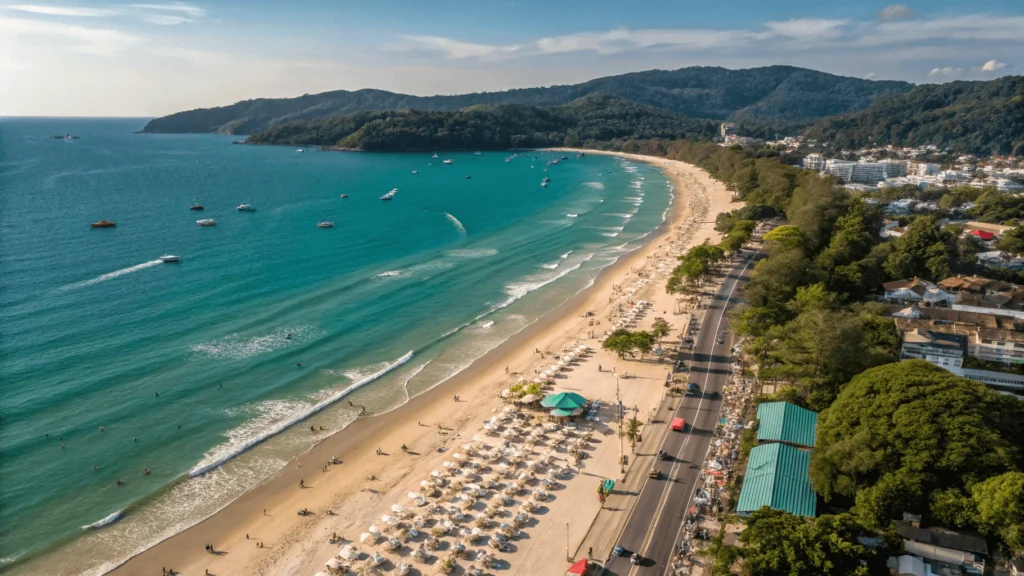
General Overview
March through May brings Thailand’s hot season, with April typically being the most extreme month. Temperatures regularly exceed 95°F (35°C), with humidity often above 70%, creating a heat index that can feel truly oppressive.
Hottest Regions
- Bangkok and Central Thailand: The urban heat island effect makes Bangkok particularly unbearable, with temperatures occasionally hitting 104°F (40°C)
- Northeast Thailand (Isaan): The least visited region by international tourists experiences some of the highest temperatures
- Northern valleys: Cities like Chiang Mai can trap heat in their valley locations
Impact
The extreme heat can make outdoor sightseeing genuinely uncomfortable, especially between 11am and 3pm. Walking through temples or markets becomes an endurance test rather than a pleasure. Dehydration and heat exhaustion are real risks for unprepared travelers.
This period coincides with Songkran (Thai New Year) in April, which brings the world’s biggest water fight—either a perfect antidote to the heat or an overwhelming experience, depending on your perspective.
Pros & Cons of Visiting During Hot Season
Pros:
- Experience Songkran, Thailand’s most famous festival (April 13-15)
- Generally dry weather (good for beaches, if you can handle the heat)
- Mango season brings Thailand’s best fruit
- Slightly lower tourist numbers than peak season
- Good water visibility for diving and snorkeling
Cons:
- Oppressive heat makes sightseeing exhausting
- Air conditioning becomes essential, increasing energy costs and potential for getting sick from temperature changes
- Heat-related health risks for vulnerable travelers
- Difficulty sleeping without good air conditioning
- Some outdoor activities become nearly impossible during midday hours
The Burning Season / Smoke Season (Northern Thailand): A Serious Concern
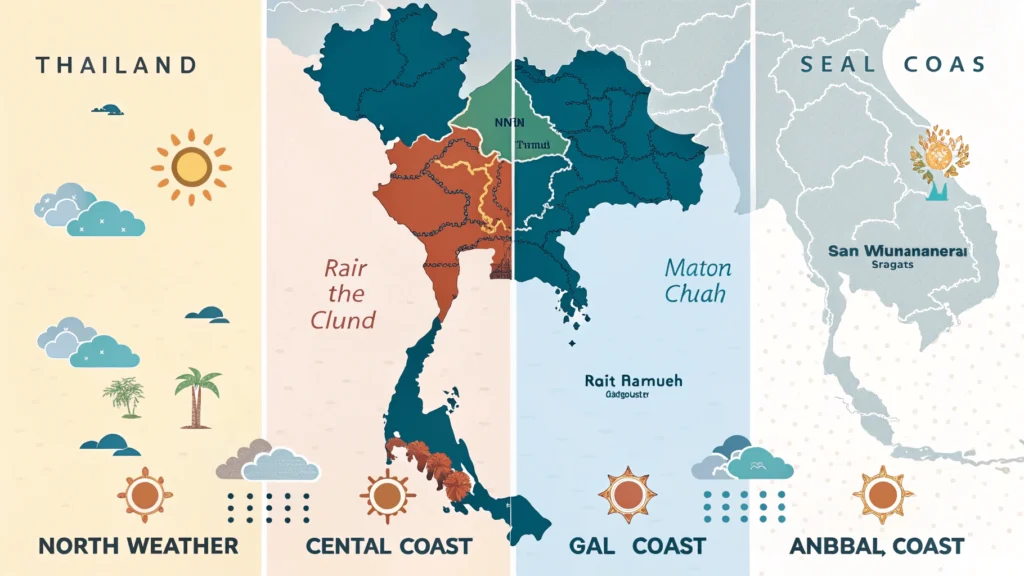
General Overview
February to April brings Northern Thailand’s most problematic period: burning season. This environmental crisis drastically reduces air quality in Chiang Mai, Chiang Rai, Pai, and surrounding areas.
Affected Regions
The burning season primarily impacts Northern Thailand, including:
- Chiang Mai province
- Chiang Rai province
- Mae Hong Son (including Pai)
- Lampang
- Phayao
- Nan
Causes
- Agricultural burning (farmers clearing fields for new planting)
- Forest fires (both natural and human-caused)
- Topography that traps smoke in mountain valleys
- Regional burning in neighboring Myanmar and Laos
Impact
The burning season creates genuinely hazardous conditions:
- Dangerous levels of PM2.5 particulate matter (often exceeding 150 μg/m³, sometimes reaching 300+ μg/m³)
- Severe health risks for anyone with respiratory conditions
- Significantly reduced visibility (mountains disappear behind haze)
- Burning eyes, sore throat, and respiratory discomfort even for healthy individuals
- Occasional flight disruptions due to poor visibility
- Psychological impact of living under constant haze
“Having visited Chiang Mai in both February and November, the difference was shocking. In February, I could barely see mountains that would normally dominate the skyline, and my throat was constantly irritated. If you have any respiratory issues, this is absolutely the worst time to visit Northern Thailand.” — Travel blogger
How to Check AQI & Safety Tips
- Use apps like AirVisual or IQAir to monitor real-time AQI levels, IQAir’s global air quality map provides real-time pollution data for cities in Thailand and beyond.
- Consider N95 masks if you must visit during this period
- Stay indoors during the worst days
- Consider alternative destinations (southern Thailand is unaffected)
- If you have asthma or other respiratory conditions, absolutely avoid Northern Thailand during this season
Peak Tourist Season: “Worst” for Crowds & Prices?

General Overview
November through February brings Thailand’s traditional high season, with cool, dry weather across most of the country. This period also includes major holiday peaks:
- Christmas and New Year (December 20 – January 5)
- Chinese New Year (January/February, dates vary)
- Thai holidays and long weekends
Impact
While weather conditions are optimal during this period, other factors make this the “worst” time for budget-conscious travelers or those seeking tranquility:
- Hotel prices increase by 50-200% compared to low season
- Popular beaches become crowded, especially those accessible from major tourist hubs
- Restaurant waiting times increase significantly
- Tours and excursions require advance booking
- International airfares to Thailand peak
- Popular Instagram spots have waiting lines
- Traffic congestion worsens in tourist areas
Is it “Worst” for You?
This depends entirely on your priorities:
- If weather is your primary concern, this is actually the best time
- If budget is your main constraint, this is truly the worst time to visit thailand
- If you dislike crowds, avoid December and January entirely
- If you need guaranteed good weather for a special occasion, the higher costs might be worthwhile
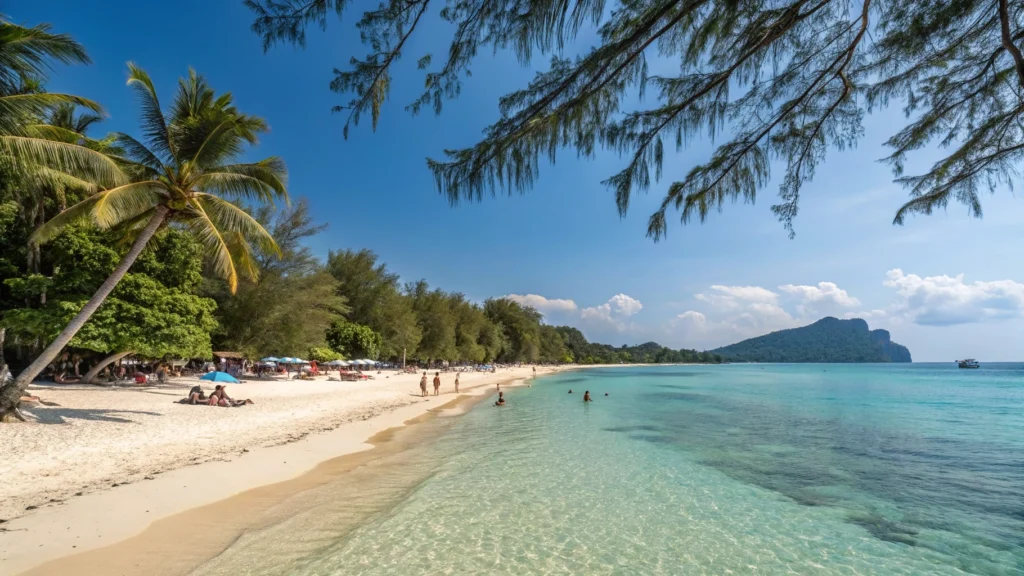
Month-by-Month “Worst Time” Snapshot
| Month | Northern Thailand | Central (Bangkok) | Andaman Coast | Gulf Coast | Key Concern(s) |
|---|---|---|---|---|---|
| January | Good but busy | Good but busy | Good but crowded | Can be rainy | Peak prices, crowds |
| February | BURNING SEASON BEGINS | Hot | Good but busy | Good | Air quality crisis in north |
| March | SEVERE BURNING | VERY HOT | VERY HOT | Hot | Worst air quality + extreme heat |
| April | PEAK BURNING | EXTREME HEAT | EXTREME HEAT | Hot | Songkran crowds + burning + heat |
| May | Improving air quality, rain begins | Very hot, thunderstorms | Rain begins | Good | Transitional with heat and increasing rain |
| June | Rainy | Rainy | Rainy, rough seas | Good | Andaman coast limitations |
| July | Rainy | Rainy | Rainy, rough seas | Good | Andaman coast limitations |
| August | Rainy | Rainy | Rainy, rough seas | Good | Some flooding possible |
| September | Rainy | Rainy, possible flooding | PEAK RAIN | Good | Wettest month for Andaman |
| October | Rain decreasing | Rain decreasing | Rain decreasing | RAIN BEGINS | Transitional month |
| November | Good | Good | Improving | RAINY | Gulf islands can be very wet |
| December | Good but busy | Good but busy | Good but crowded | Rain decreasing | Peak prices, extreme crowds |
So, When is ACTUALLY the Worst Time to Visit Thailand?
After examining all factors, here are the genuine “worst times” based on different priorities:
If avoiding widespread rain is your priority:
- Worst for Andaman Coast (Phuket, Krabi): September
- Worst for Gulf Islands (Samui, Phangan): November
- Worst for Bangkok: September-October (potential flooding)
If avoiding extreme heat is your priority:
- Worst for all regions: April
- Second worst: March and May
If avoiding air pollution in Northern Thailand is your priority:
- Absolutely avoid: March-April in Chiang Mai, Chiang Rai and surrounding areas
- Secondary concern: February (when burning begins)
If avoiding crowds and high prices is your priority:
- Worst period: December 20th – January 10th (Christmas/New Year peak)
- Secondary concern: February during Chinese New Year
All factors considered, the single worst week for Thailand overall might be:
- Early April, when burning season peaks in the north, extreme heat affects the entire country, and Songkran crowds and price increases begin
Alternatives & Strategies for “Worst Time” Travel
If you must visit Thailand during one of these challenging periods, here are strategies to make the most of your trip:
When Visiting During Rainy Season
- Focus on indoor activities:
- Cooking classes
- Museum visits (National Museum, Jim Thompson House in Bangkok)
- Luxury mall exploration (Bangkok’s malls are world-class)
- Spa treatments and Thai massage
- Food tours (often run regardless of weather)
- Choose rain-friendly locations:
- Koh Samui during Phuket’s rainy season
- Urban areas with indoor attractions
- Locations with microclimate advantages
- Embrace the rain:
- Pack appropriate gear
- Enjoy smaller crowds at major attractions
- Photograph lush landscapes
- Experience authentic local life when tourists are few
When Visiting During Burning Season
- Alternative northern destinations:
- Sukhothai (historical park usually has better air quality than far north)
- Kanchanaburi (western Thailand, less affected)
- Consider completely skipping the north and focusing on central/southern regions
- Indoor air quality measures:
- Book accommodations with air purifiers
- Spend time in modern malls with filtered air
- Limit outdoor activity on high AQI days
When Visiting During Hot Season
- Strategic scheduling:
- Wake early for morning activities (6-10am)
- Rest during peak heat (11am-3pm)
- Resume activities in early evening
- Book accommodations with pools
- Heat mitigation:
- Focus on water-based activities
- Seek air-conditioned transportation
- Stay constantly hydrated
- Use cooling towels and appropriate sun protection
When Visiting During Peak Tourist Season
- Finding deals:
- Book accommodations 3-6 months in advance
- Consider slightly off-center locations
- Look for new properties offering introductory rates
- Use price comparison tools aggressively
- Avoiding crowds:
- Visit major attractions at opening time or late afternoon
- Explore lesser-known temples and beaches
- Consider private tours instead of group options
- Dine at off-peak hours
What About the “Best Time” to Visit Thailand?
For context, Thailand’s generally accepted “best” times to visit are:
- November to early December: After the rains, before peak crowds
- January (except around New Year): Cool, dry weather nationwide
- Late January to early February: Excellent weather, slightly fewer tourists
For the Gulf Islands (Koh Samui, Koh Phangan, Koh Tao), the optimal weather window shifts to:
- February to April: When these islands experience their driest, sunniest period
Frequently Asked Questions
What is the absolute worst month to go to Thailand?
There is no single “worst” month that applies nationwide. For Northern Thailand, March-April (burning season) is worst. For the Andaman coast, September (peak rain) is worst. For Gulf islands, November (peak rain) is worst. For those sensitive to heat, April is worst nationwide.
Is Thailand bad in July and August?
For the Andaman coast (Phuket, Krabi), July and August bring consistent rain and rough seas, making it suboptimal. However, the Gulf islands (Koh Samui, Koh Phangan) are excellent during this period. Bangkok and Central Thailand experience regular but usually brief afternoon showers.
Is it safe to travel during Thailand’s burning season?
For travelers with respiratory conditions, Northern Thailand’s burning season (February-April) presents genuine health risks and should be avoided. Even healthy individuals may experience discomfort from the poor air quality. Southern Thailand remains unaffected by this issue.
Can I still go to the beach during Thailand’s rainy season?
Yes, but with regional planning. During the Andaman coast’s rainy season (May-October), consider visiting Gulf coast beaches instead, which experience their best weather during this period. Even during rainy season, mornings often offer sunshine before afternoon showers.
When is the cheapest time to visit Thailand?
The cheapest time generally aligns with the rainy season, particularly September and October. For the Gulf islands, the best value period is October-November. Hotel rates can drop 30-50% compared to high season, with exception of Songkran holiday in April.
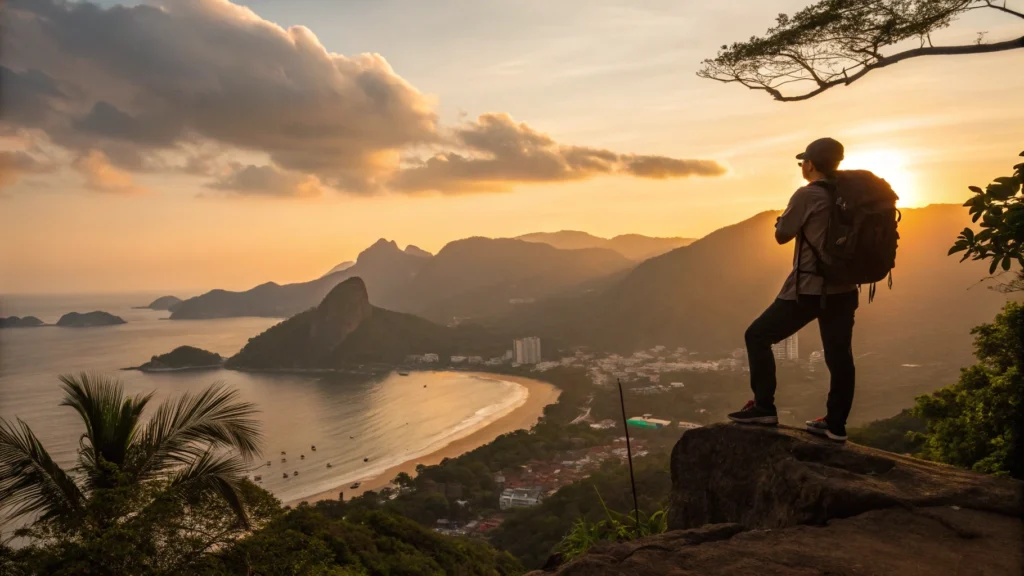
Final Thoughts
Understanding Thailand’s worst times to visit requires nuanced regional knowledge rather than simplistic country-wide generalizations. The “worst time to visit Thailand” varies dramatically depending on which part of the country you’re exploring and what factors matter most to you personally.
Remember these key takeaways:
- The Andaman and Gulf coasts have opposite rainy seasons
- Northern Thailand’s burning season (February-April) creates a genuine health concern
- The extreme heat of April affects the entire country
- Peak tourist season (December-January) brings perfect weather but maximum crowds and prices
By planning around these regional variations and understanding your personal priorities, you can avoid the genuine “worst” times while potentially benefiting from lower prices and fewer crowds during Thailand’s so-called “off seasons.”
What’s your experience with Thailand’s challenging travel periods? Have you visited during one of these “worst” times and discovered unexpected benefits? Share your tips and experiences below!

